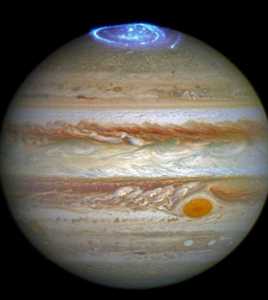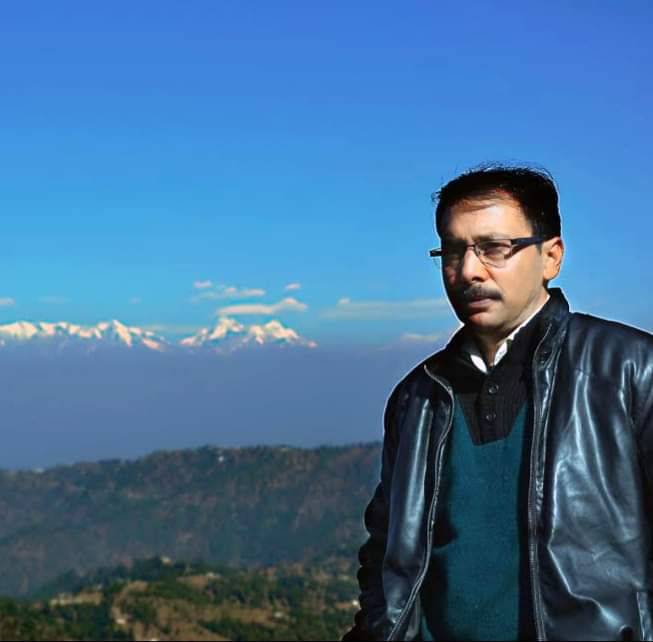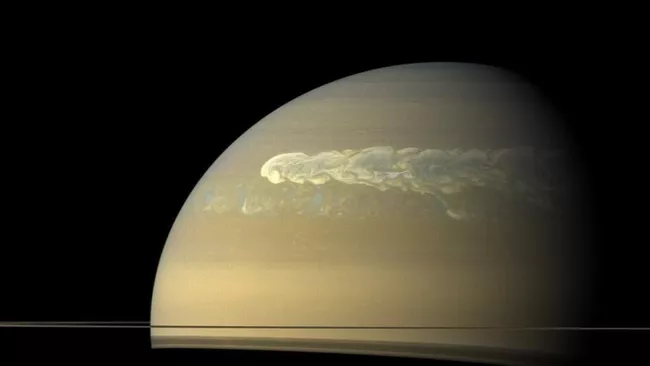Saturn in the grip of severe storm
The planet Saturn is in the grip of severe these days. This storm is named as mega storm. Compared to Earth, the storms that arise in Saturn are extremely dangerous, which disintegrates the atmosphere of Saturn. These storms occur every 20 to 30 years, similar to hurricanes on Earth, but much larger and more severe. Storms on Earth draw energy from the oceans, but Saturn’s storms are generated from hydrogen and helium. But scientists believe that the process of megastorms arising in Saturn is still somewhat mysterious. The research could also have an impact on how scientists search for megastorms on gas giant planets outside the solar system. The special thing is that due to the storm, ammonia is raining in Saturn.
Astronomers from the University of California, Berkeley and the University of Michigan, Ann Arbor, have learned more about these storms on Saturn by studying disruptions in the distribution of ammonia gas in Saturn’s deep atmosphere. “Understanding the mechanisms of the largest storms in the Solar System puts hurricane theory into a broader cosmological context, challenging our current knowledge and pushing the boundaries of terrestrial meteorology,” Cheng Li, assistant professor at the University of Michigan, said in a statement. advances.”
Scientists have gathered information that Saturn’s long-lasting megastorms continue for centuries and destroy its deep atmosphere.
Saturn was previously thought to be somewhat quieter than its fellow Solar System gas giant Jupiter, which for hundreds of years has been home to a 10,000-mile-wide storm called the Great Red Spot. Although Jupiter’s Great Red Spot remains the largest storm in the Solar System, Saturn’s newly exposed storms are still so powerful that Earth’s storms pale in comparison.
Lee and the team in New Mexico at the Carl G. This disruption was detected by observing radio emissions from ammonia in Saturn’s atmosphere using the Jansky Very Large Array (VLA). Although Saturn appears mostly uniform in visible light, its distinctive banding and differences between atmospheric layers at different altitudes are more apparent when viewed at radio waves.
This is because radio observations can look much deeper into planetary atmospheres than optical telescopes, helping astronomers better understand the chemical and physical processes that lead to cloud formation and the transfer of heat. “At radio wavelengths, we probe beneath the visible cloud layers on giant planets,” UC Berkeley astronomer Imke de Pater said in the statement. “Since chemical reactions and dynamics will change the composition of a planet’s atmosphere, observations below these cloud layers are needed to constrain the planet’s true atmospheric composition, which is a key parameter for planet formation models. ”
The team found something surprising in radio emissions from within Saturn’s atmosphere in the form of anomalies in ammonia concentrations. They were able to link these anomalies to earlier megastorms that occurred in the northern hemisphere of the gas giant.

Source: University of California.
Photo: NASA/JPL/Space Science Foundation.

Journalist Space science.
Working with India’s leading news paper.
और अधिक जानें

